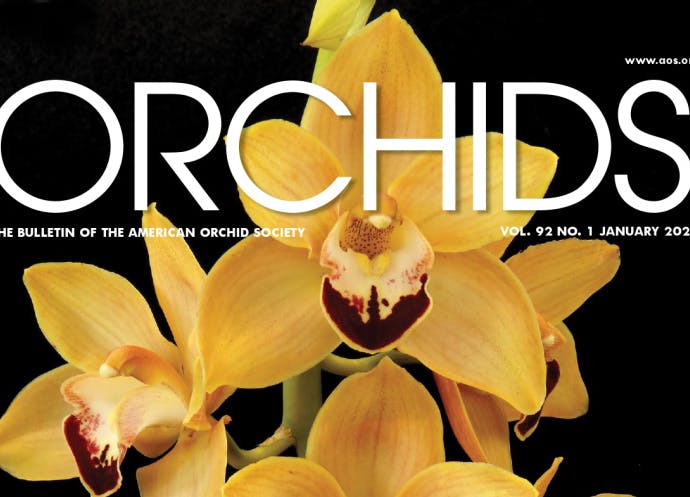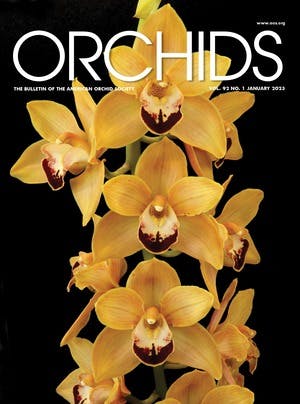
Early Subtle Signs of Virus
THEY SAY THAT the only way to be sure if a plant is virused is to test it. Now we will have to add a qualifier to that statement, “...unless Dave Off is in town.” Dave manages Waldor Orchids in Linwood, New Jersey with other family members. He was vacationing in St. Augustine with his family and spoke to our club. The subject of orchid viruses came up in one of our conversations, and Dave offered to walk through my greenhouse and identify potentially virused orchids. I hoped he would be unsuccessful, because several years ago I discarded about a third of my cattleyas after they tested positive. Unfortunately, Eagle Eye Dave walked through the greenhouse and brought a half dozen or so cattleyas to my attention. Each one later tested positive for virus.
Dave has an internal checklist that he uses to identify virused plants. He looks at the new growth, and it must be at the proper point in its growth cycle, when the leaf is unfolding but before it hardens off. The symptoms on the young leaves are very subtle. On the newest forming leaf, there is a longitudinal streaking running parallel to the veins in the leaf. This streaking does not tend to traverse the entire leaf blade. It is slightly irregular on the horizontal axis, so it is somewhat blotchy in appearance. The streaking is evident on both the upper and lower leaf surfaces. The discoloration is inside the young leaf, with no sunken areas. This streaking may or may not disappear when the leaf is mature, depending on the severity of the infection. It is best viewed early or late in the day rather than under conditions that are too bright.
If Dave sees some chlorotic streaking, he starts inspecting the rest of the plant, first looking at the other new growths to see if they too exhibit symptoms. Both top and bottom leaf surfaces are inspected. If virused, the streaking will be visible in all the new growths. He looks at the older part of the plant, perhaps there might be the necrotic black splotches or the reddish-purple markings often reported for virused plants. He looks at any flowers that might be present, for signs of color break or necrotic streaking. He looks at the flower sheath for signs of abnormalities. He also evaluates the plant’s growth vigor, as viruses can sap strength from a plant. The phalaenopsis bench was Dave’s next target. I have not tested many phalaenopsis because of the generally held assumption that many of those sold in the mass markets could be virused. Dave found a dozen plants that looked suspicious to him, and upon testing, Dave continued to bat a thousand ... more bench space!
In more advanced stages of viral disease, the more commonly recognized signs of virus might appear in the plant. These include the black necrotic blotching often reported for cymbidium mosaic virus (CymMV) or the reddish-purple markings of odontoglossum ringspot virus (ORSV)
[1] Subtle expression of virus in young cattleya leaves: longitudinal irregular chlorotic streaking, evident on upper and lower leaf surfaces. Depending on the severity of the virus infection it may or may not disappear when the leaf is mature.

[2–5] The chlorotic streaking from virus in young Cattleya leaves is very subtle. Dave could predict from the markings whether it was CymMV or ORSV. ORSV streaking tends to be more blotchy and CymMV more linear. The presence or absence of color was also predictive. I will need a few more lessons to make any educated guesses.















